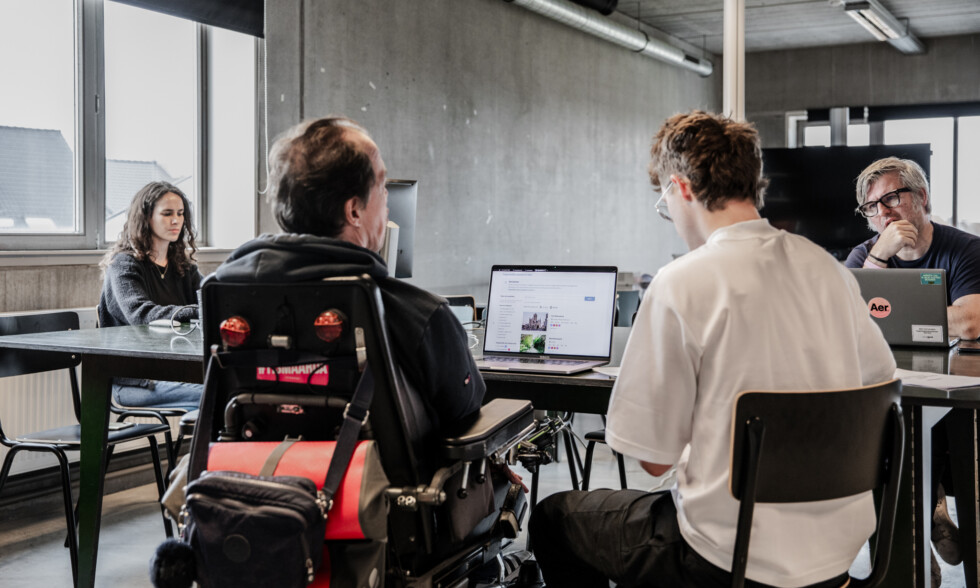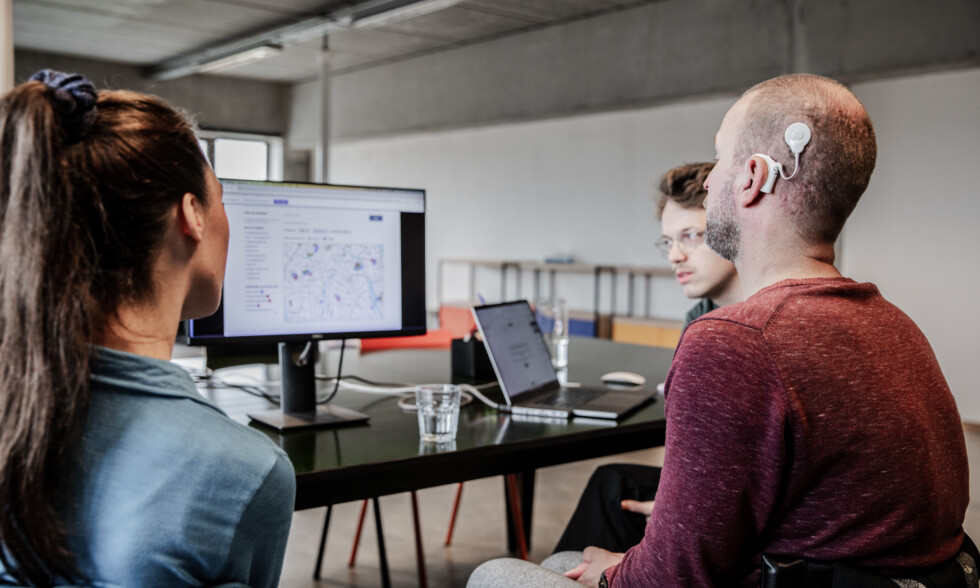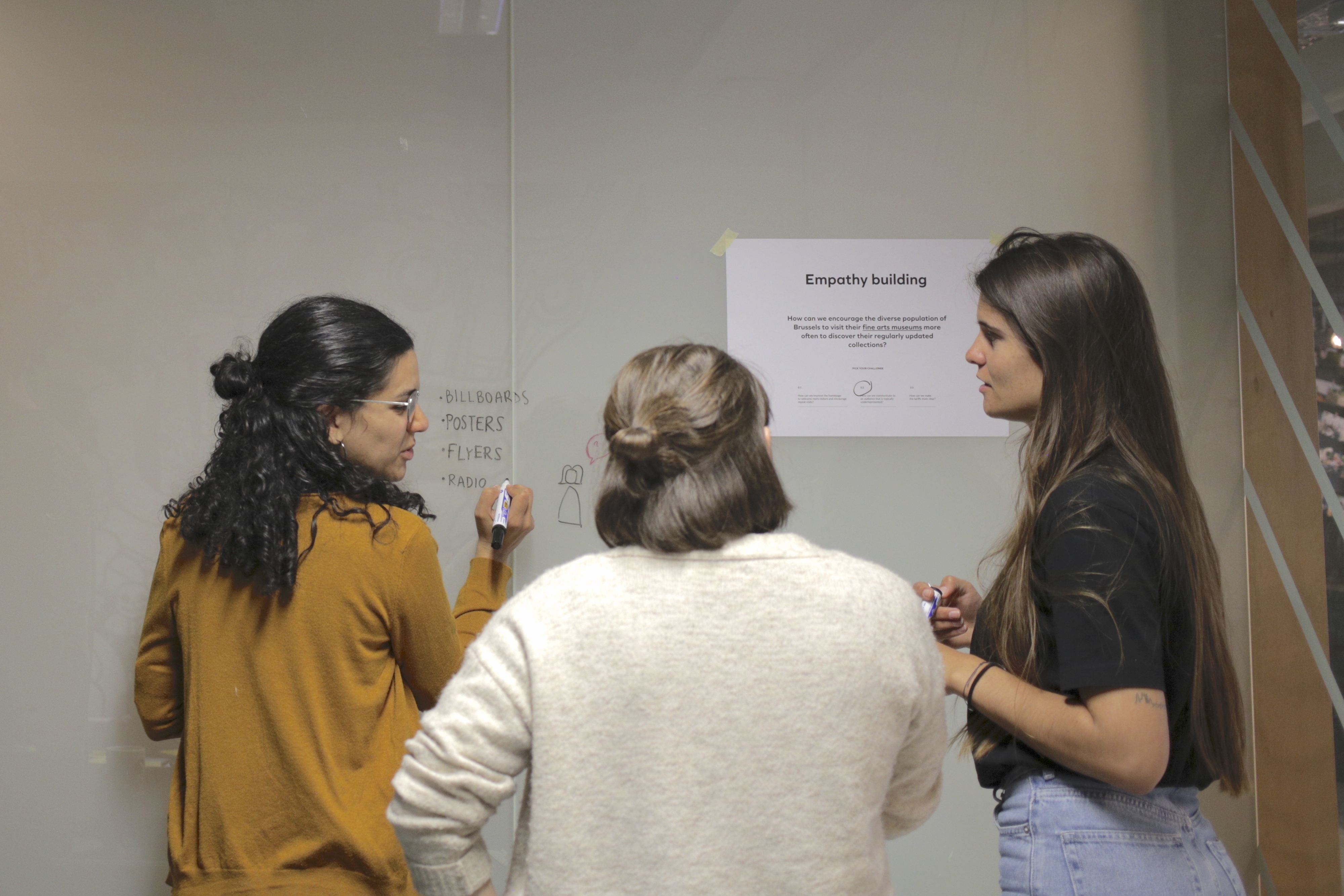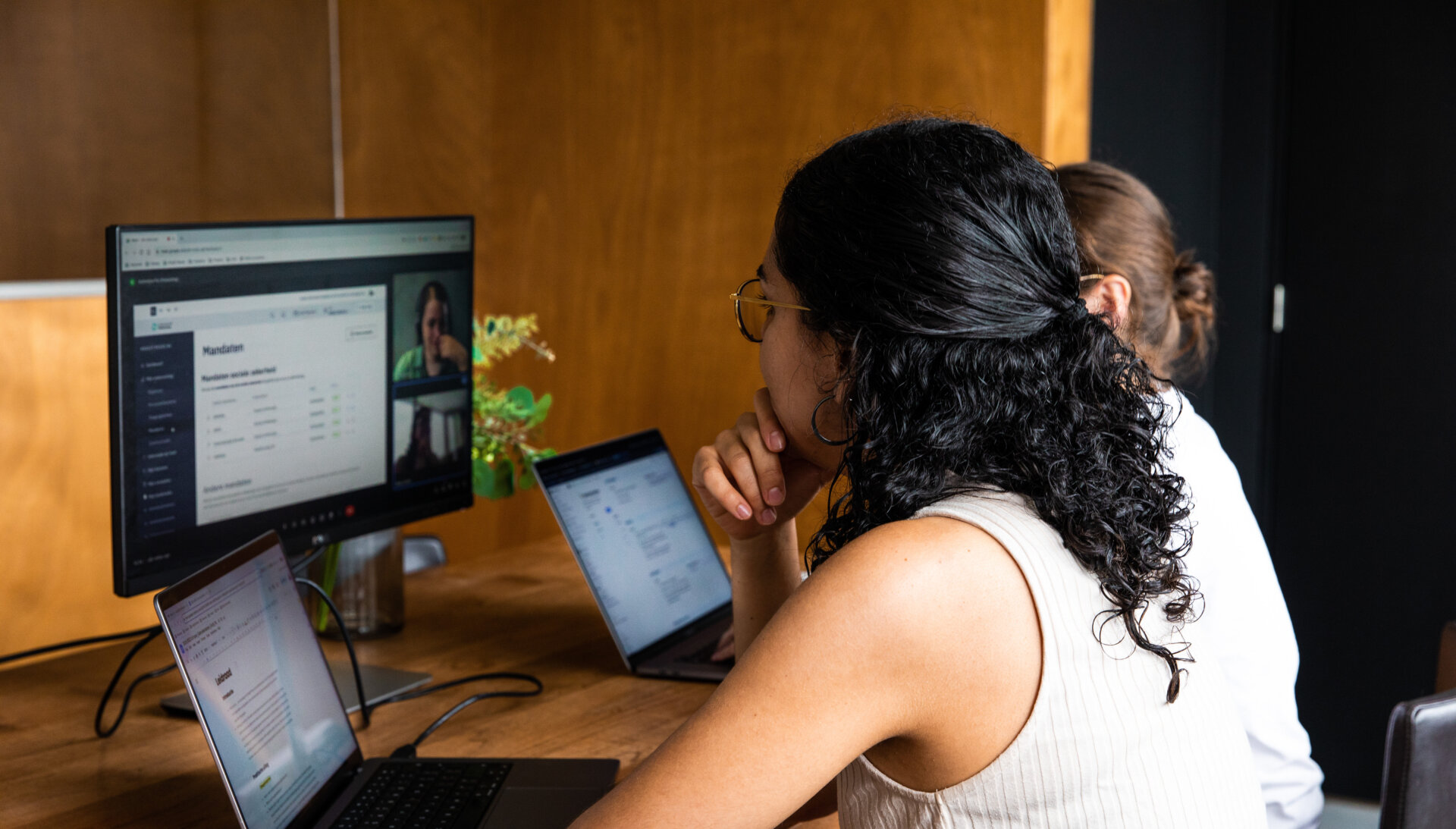
Make your digital services inclusive in 4 steps
Does your organization want to reach more citizens with its websites and digital applications, but does it seem like an insurmountable mountain? No problem! Discover in this blog post that it is easier than you think to make your digital services inclusive. Get started with our step-by-step plan and be inspired by useful methodologies and practical examples.
For this blog post we use the knowledge and expertise that we build up within Knight Moves in designing inclusive (digital) services. In recent years we have strengthened our expertise by collaborating with various local and Flemish authorities, and social and non-profit organizations. In this blog post we draw in particular on our experience in the context of the City Deal e-inclusion by design.
The City Deal E-inclusion by design is an initiative of the Kenniscentrum Vlaamse Steden and District09 and runs from September 2022 to December 2024. The goal? To support 13 cities in Flanders and the VGC Brussels in making their digital services more inclusive. We, two coaches from Knight Moves, together with two coaches from Twisted Studio, were given the opportunity to train and facilitate this network. To be precise, we have already provided more than 50 training courses on human-centered and inclusive design to more than 200 employees in the cities. In addition, we promote the exchange of learning experiences from 24 local experiments through a monthly network meeting and ten intervision moments. Mediawijs, INTER and VVSG help to translate and distribute the learning lessons to medium-sized and small local authorities. The City Deal is subsidized with recovery funds (‘Everyone Digital’ action plan) launched by the outgoing Flemish government to promote e-inclusion at local level.
Why inclusive digital services are important
In recent years, both public and private organizations have massively digitized their services. Many citizens and entrepreneurs welcome this because it gives them easier access to services such as information, certificates and subsidies. Most Flemish people also seem to participate digitally. According to the Digimeter (imec 2023), today 99% have at least one device to connect to the internet.
However, the same research and signals from the field ( Signal Bundle 2023 Primary Care City of Ghent ) show that a large group of citizens does not want or cannot use digital services. 38% feel that digital technology is being imposed against their will. Only 22% want to do everything online.
The King Baudouin Foundation's digital inclusion barometer ( 2024 ) shows the inequality in digital access. 11% of people with a low income in Belgium do not have internet at home, and 25% of them can only access the internet with a smartphone. While 13% of high incomes do not use e-administration, this rises to 30% for low incomes.
We believe it is important to take into account the needs of this substantial group of citizens so that they can obtain their right to services. This can be done by applying e-inclusion by design when we digitize services.
What is e-inclusion by design?
E-inclusion by design is one of four pillars that local authorities can work on to tackle digital exclusion (Mediawijs, ‘Wat is digitale inclusie’):
Digital access: governments give citizens access to digital devices, software and the internet
Digital skills: governments ensure that citizens increase their digital knowledge and skills
A support network: governments ensure that citizens get assistance from someone
E-inclusion by design: governments make their digital services as user-friendly and accessible as possible
To 'design for inclusion' means that you take the risks of digital exclusion into account from the start of designing your digital services. You do not expect citizens to adapt to your services, but you adapt your services to the citizens.
e-inclusion by design goes beyond accessibility (web accessibility). After all, you don't just remove barriers for people with disabilities. You also pay attention to socio-economic, social and psychological risks of exclusion: not having a smartphone or authenticator (e.g. Itsme), having limited language knowledge or digital skills, concerns about safety...
A step-by-step plan for e-inclusion by design
At the start of the blog post we promised you a concrete step-by-step plan, with methodologies and practical examples. Here we are!
E-inclusion by design follows the step-by-step plan of human-centered design — also known as service design or human-centered design:
- Investigate the needs of your citizens, internal employees and partner organizations
- Prioritize the needs your digital solution must meet
- Use known principles of inclusive design
- Test and improve your solution with users
At every step we make additional efforts to identify, prevent and resolve risks of digital exclusion. In this way we not only obtain a user-friendly but also an inclusive digital solution.
Example
In one of the central cities, the project leader discovered that social workers are not interested in a digital solution to register their clients at a ‘digipunt’. A digipunt is a location where citizens can use computers and internet for free; are helped when going online; and can take courses. One group of social workers believes that they should make their clients self-reliant so that they can register themselves. The other group wants to register the clients, but not digitally. These social workers find personal contact with the digipunt employee important to determine which courses suit their client best and to make a warm transfer.
Put your (vulnerable) citizens first
In this first step you investigate what exactly citizens need and want with regard to the new digital service. You undoubtedly have many assumptions about that. But are they also correct?
How do you proceed?
List your assumptions: what do you think citizens need, what prior knowledge do you think citizens have, and what preferences do they have?
Indicate what you know for sure and what you do not know for sure
- Test your uncertain assumptions with user research.
You can use the administrative data in-house or existing research.
You can talk to citizens and observe how they use your (digital) services today - which we find even more effective and fun
Asking for honest feedback directly from citizens may be a bit outside your comfort zone. The experiments in the City Deal show that you can get started easily. For example: In Bruges, the project leader drew up a questionnaire with which she interviewed customers in the queue at the social grocery store. She quickly discovered that many customers of the social grocery store are not interested in a webshop and home delivery. They would miss social contact and not be able to see products with their own eyes. The conversations did reveal the need for a paper form to order products for the following week.
The example from Bruges shows that citizens at risk of digital exclusion are not always difficult to reach. Can you think of places in your own community where you can go to them? Can you appeal to members of the local accessibility council (for people with disabilities), the local elderly council (for older citizens), or a local association for people in poverty?
Take a look here if you want to learn more about how to conduct user research.
Listen to your internal staff
Digitising services touches more internal processes than we think. Digitisation has an impact on the work of internal employees and the applications they use. It therefore makes sense to involve front-line and back-office staff as well.
How do you proceed?
Create a 'customer journey' ('customer journey') of the current service and go through it step by step with a group of employees. A customer journey starts from the steps citizens go through to obtain a service: (1) discovering that a service exists; (2) finding out about it; (3) requesting the service; (4) getting the service; (5) coming back. On the customer journey, you indicate the needs and concerns you discovered in the user research. You now complement it with the needs and concerns of employees. You can also sound out the opportunities they see to improve the service and the internal underlying process for citizens and themselves.
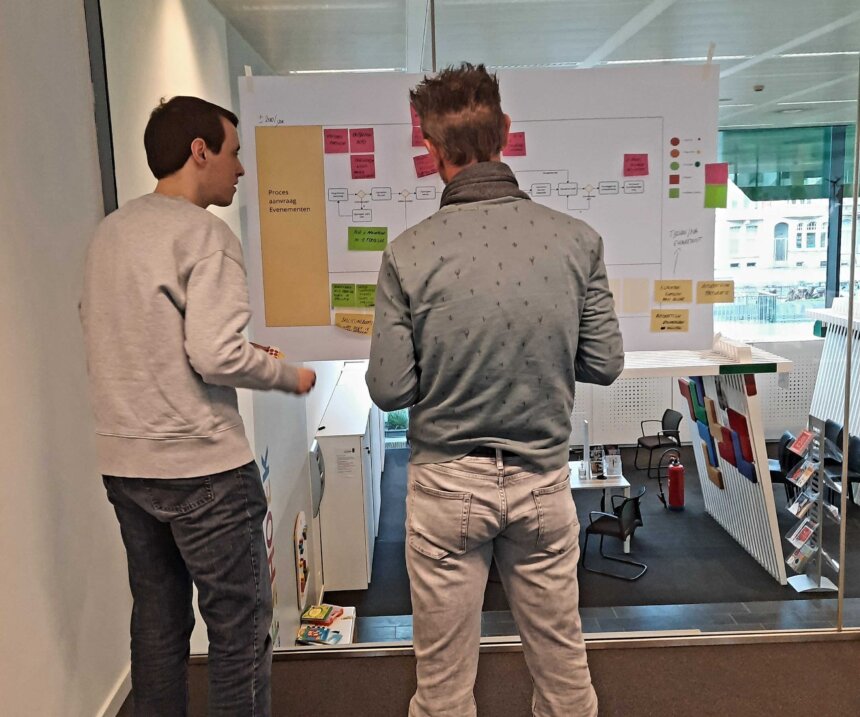
Example Leuven
In Leuven, the project manager responsible for digitising the 'Taking public domain' process organised two sessions with users to get a good idea of their needs. In the first workshop, she involved citizens who submitted a request to organise an event or install a terrace. In the second workshop, she involved file handlers with the city: they could confirm and add to the pain points identified; devise solutions together; and prioritise solutions.
Step 2: Prioritize which needs your digital solution should meet
The research in step 1 provides insights into what the digital solution and the associated service process require. Before you have a digital solution built, it is good to neatly list all requirements.
How do you proceed?
List what the website/application/platform must be able to do for citizens and internal employees. What specific requirements are there to ensure it can also be used by digitally vulnerable citizens?
Rarely are budget and time sufficient to fulfill all needs at once. It is therefore best to prioritize them into what is absolutely indispensable and what is just nice to have. You may even be able to eliminate some needs because research shows they aren't necessary after all. The prioritization determines what you will launch in the first version of your digital solution (MVP - 'minimal viable product') and what things you may add later.
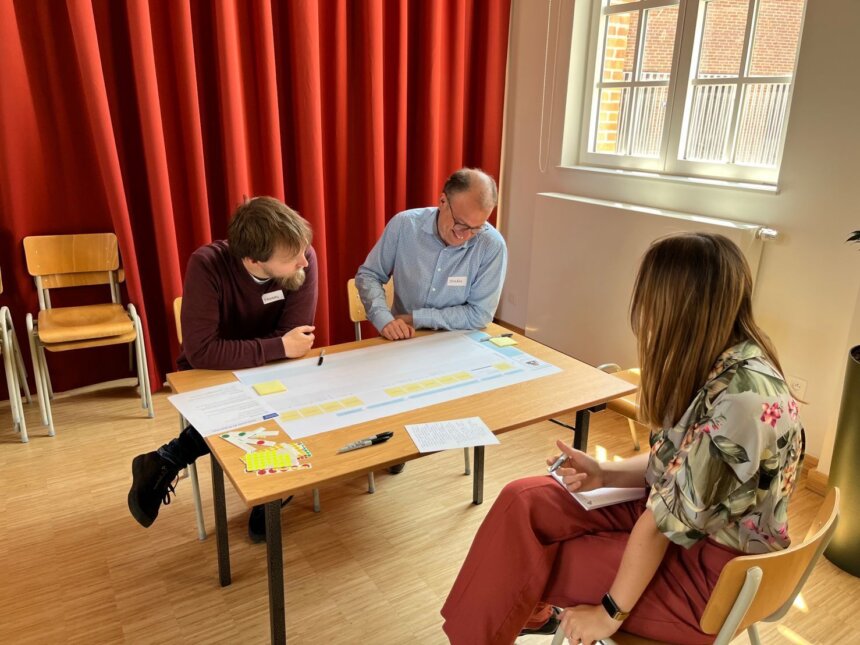
Example Sint-Niklaas
In Sint-Niklaas, the project leader interviewed several entrepreneurs in the city. His goal? Learning what entrepreneurs think are the most important functionalities of a digital application to follow up entrepreneurial questions in the city. For example: being able to temporarily save a question, being able to consult or be informed about the status of a question themselves or looking up old questions.
Because choosing feels like losing, it makes sense to involve all stakeholders in the prioritization exercise. The managers of the service(s) that are being digitized, the IT manager, the communications service, the financial sponsor, the digital inclusion coach, ... each of them have their own view of the solution based on their expertise and responsibilities. Bringing together their expertise and interests increases the chance that the choices are coherent and balanced. Moreover, you are not alone in this difficult choice and you create support for the choices.
Example
In Kortrijk, the project group sat together with the designers of the website to make it easier for citizens to access the online module for 'making an appointment'. They started from insights from user research and design principles. Hence, the designers created a prototype of a web page (wireframe) with a proposal for improved structure and word usage.
Carrousel
Step 4: Test and improve your solution
Did your internal IT department or supplier make a prototype of the digital solution? Or do you have a demo version available? Then it is very valuable to test that version with citizens before proceeding with final development/purchase.
How do you proceed?
Look for potential future users. In particular, look for citizens at risk of digital exclusion. With five users you can go far!
Think in advance of some relevant tasks that you can give to citizens in the test; For example, check whether you can make an appointment online in our municipality to request an e-ID; make an appointment to collect an e-ID; cancel an appointment.
Sit with the test person at the smartphone or laptop. Put test person at ease: it is not them, but the digital application that is being tested. Give the tasks to the user one by one. Only intervene if the user is stuck.
Example
The City of Gent set up a user test to test prototypes of a new website for citizens migrating to Gent. The team was pleasantly surprised that many potential users were excited to share their thoughts about the website. Translators-interpreters, family members and Google Translate helped bridge the language barrier. The City of Gent involved the target group not only in the user tests, but also in user research and in a co-creation session. You can read more about the entire route of the city of Gent here.
Conclusion
Making your digital services inclusive is feasible and rewarding. This is demonstrated by the various experiments that the cities in the City Deal have set up over the past two years. We would like to thank the employees for taking this leap and share their learning lessons with us and you.
We hope that the step-by-step plan and practical examples in this blog post will inspire you and help you get started yourself!
Thank you very much to all partners in the City Deal 'e-inclusion by design' for the many valuable learning experiences that we can draw on for this blog post.
Stay informed
This autumn, we are launching two instruments from the City Deal 'e-inclusion by design' that can help you and colleagues even further:
#ANT's escape room allows you to experience first-hand what citizens experience when digital services are not inclusive. The game is 'mobile' and compact so you can play it in your own office.
The toolbox created by Knight Moves and Twisted Studio offers you methodologies, templates and inspiring examples to make your digital services more user-friendly and inclusive. The toolbox has been designed with and for local authorities, but is also freely accessible and usable by other organizations via the Mediawijs website.
Call To Action
Stay up to date through our channels!
